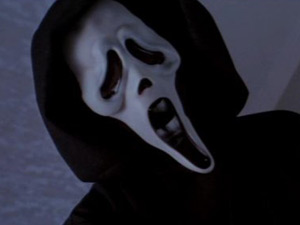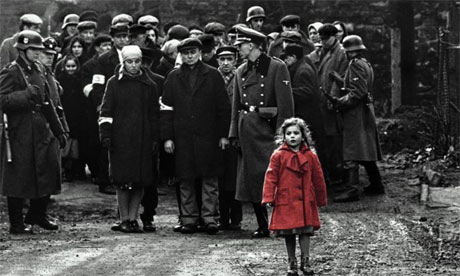Research Into Mise-en-scene
Mise-en-scene is a French
term meaning what is put into a scene or frame. It is made up of visual
information in front of the camera and communicates essential information to
the audience about setting and characters. The five elements of mise-en-scene
include: Settings & props, costume, hair & makeup, facial expressions
& body language, lighting & colour and the positioning of objects
within the frame. Each aspect of the mise-en-scene creates meanings and communicates
them to the audience, influencing how they feel at a certain point. They can
also be used for narrative enigma and make the audience question why certain
objects have been placed in the way it has, creating mystery and an engaging
opening sequence.
Settings & Props:
The location and setting play
an important part in filmmaking and help to manipulate an audience by building
on certain expectations and creating various moods. The setting can either be
built from scratch, allowing the designers to create exactly what they
envision, or another time consuming process may be finding a setting that
currently exists and filming there. For thriller or horror films, conventions
of settings a props include dark forests, basements, knives, weapons, blood,
abandoned buildings and other eerie related objects.
 |
| (Forest) |
Costume, Hair & Make
up:
The costume, hair and make up
immediately tell the audience what time the film is set, which society or
culture it may be based around. They act as an instant indicator to the
audience of a character, such as their occupation or role within the film.
Costumes are also important as they help the audience shape an understanding
around each character and how they may be the protagonist or antagonist. Within
horror film, the use of dark clothing and masks could be seen as a convention
as they mask the identity of the killer so that the audience do not know who
they are.
 |
| (Scream Mask) |
Facial Expressions &
body language:
The use of facial expressions
allows the audience to clearly indicate the emotions conveyed by the
characters. For example, if someone is frowning, the audience may assume they
are either angry or upset. To emphasise this mood, music or other sounds may be
played within the background to show this emotion. Body language may also
indicate how a character feels towards other people, or to emphasise the facial
expressions. In horror films, the victims may have a horrified facial
expression to show the audience they are afraid. Their body language may also
be used to emphasise this, such as my raising their hands to either side of
their cheek. This could be seen as a convention for various horror, slasher or
thriller movies.
 |
| (Scared Facial Expression) |
Lighting & Colour:
By using lighting and colour,
it can be used to highlight important characters or objects within the frame.
It can also make characters look mysterious by shading parts of the face so it
cannot be clearly identified. Colour can also be used to reflect a characters
mental state or any hidden emotions. Each colour carried various connotations
which may add meaning to the scene and give it a particular mood or for
dramatic effect. For example, in ‘Schindler’s List’ one scene where a small
girl dressed in red is shown within a short scene. As the movie is in black and
white besides this scene, it gives huge significance to the colour and
character used.
 |
| (Schindler's List: Girl in Red Coat) |
Positioning of Characters
& Objects Within a Frame:
The position within a frame
can draw the audience’s attention to an important character or object. A
filmmaker can use the positioning to distinguish relations between different
people and perhaps the emotions they have towards each other. For example,
within a horror film, the chase sequence between the killer and victim could
show how they are in danger, and how the victim is trying to escape the grasp
of the killer. Within a romantic film, the two companions may be positioned
close together, indicating to the audience that they may be a couple.
 |
| (Chase Sequence) |
In order for me to understand
about mise-en-scene and how it can be applied to our opening sequence, I
created two images within pixelmator in order to establish the moods created
within a scene. The first image is of a room filled with various objects taken
from a character profile description. From reading the description, I selected
key pieces of information and used images to display within the image:
- ‘Nietzsche poster on the walls’
- ‘The room is a clutter of papers’
- ‘His bed is spotlessly clean and always tidy’
 |
| (Image Created on Pixelmator) |
The other image I had created
on pixelmator is using images I had taken of a model set used for creating the setting
of the film. After taking various shots of this model, I uploaded the images
and chose one that I felt gave an eerie effect. To begin with, I made the whole
image darker to give an eerie feel so that it conveys a mystery/horror feel.
Within the window in the background, I cropped shadows and darkened it so that
it became black. This creates ambiguity within the mise-en-scene as the viewer
can only see a silhouette of a figure, yet have no information about them.
Within the foreground, I added heaps of snow to link with the setting and to
create a more authentic look. I also added a ‘caution – biohazard’ security
tape to develop the scene and give some information about the possible plots.
By combining these various aspects onto one piece, it gives the viewer an idea
of what the setting may look like and how it can be recreated on a real
set.
 |
| (Image Created on Pixelmator) |

No comments:
Post a Comment